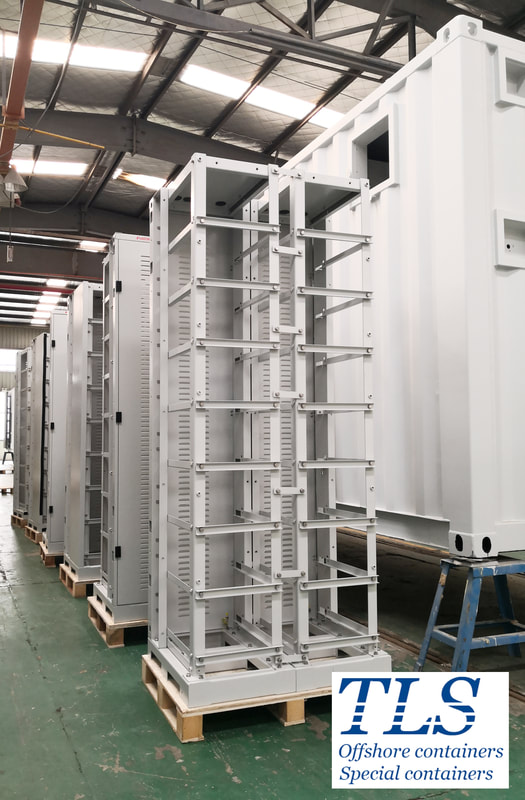|
In a Battery Energy Storage System (BESS) container, the design of the battery rack plays a crucial role in the system's overall performance, safety, and longevity. The battery rack is essentially the structure that houses the individual battery modules, and its design involves several key considerations. 1. Material Selection: The material used for the battery rack should be durable and resistant to the environmental conditions within the BESS container. Typically, materials like stainless steel or aluminum are used due to their strength, corrosion resistance, and relatively light weight. 2. Thermal Management: The design of the battery rack should facilitate effective thermal management. This could involve the use of air or liquid cooling systems, and the rack should be designed to allow for efficient heat dissipation. 3. Accessibility and Maintenance: The battery rack should be designed to allow for easy access to the individual battery modules for maintenance or replacement. This often involves the use of sliding or removable trays. 4. Safety Considerations: The rack should be designed with safety in mind. This includes features such as insulation to prevent electrical shorts, and containment structures to prevent the spread of any potential thermal events. 5. Space Optimization: The design of the battery rack should make efficient use of the available space within the BESS container. This often involves stacking the battery modules in multiple layers, while still allowing for adequate ventilation and cooling. 6. Modularity: A modular design allows for flexibility in terms of the system's capacity and power. It allows for easy expansion or reduction of the system's capacity by adding or removing battery modules. 7. Structural Stability: Given the substantial weight of the battery modules, the rack needs to be structurally stable to withstand the load, as well as any external forces such as those experienced during transportation. 8. Compliance with Standards: The design of the battery rack should comply with relevant safety and performance standards, such as those outlined by the National Electrical Manufacturers Association (NEMA) or the International Electrotechnical Commission (IEC). In conclusion, the design of the battery rack in a BESS container is a complex task that requires careful consideration of various factors. A well-designed battery rack can significantly enhance the performance, safety, and longevity of the BESS, making it a critical component of the system. Comments are closed.
|
Archives
July 2024
Categories
All
|
- Home
-
Containerised solutions
- Intelligent pressurised container | MUD logging cabin
- Battery energy storage system (BESS) container
- Flexible grid tied battery storage system
- Laboratory container | workshop container | Equipment containers
- Temporary refuge shelter | Toxic gas refuge | Safe haven
- Offshore accommodation cabin | office container
- Reefer container | Refrigerated container
- Intelligent waste water treatment container
- Fresh water generator container
- Cargo Containers
- Product photos & videos
- News & Blogs
- Contact us
|
Featured products
Intelligent pressurised container Temporary refuge (TR) shelter, toxic gas refuge (TGR) Battery energy storage system (BESS) container Containerised waste water treatment plant Fresh water generator container Reefer container Laboratory container, Workshop container Accommodation container Offshore closed container |
All Rights Reserved 2020 © TLS Offshore Containers / TLS Energy
|


